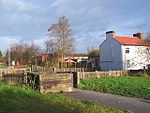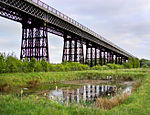Erewash Sound
Borough of ErewashCommunity radio stations in the United KingdomRadio stations in Derbyshire
Erewash Sound is a community radio station broadcasting to the borough of Erewash in Derbyshire, including Ilkeston, West Hallam, Long Eaton, Borrowash and surrounding areas. Following a short-term RSL broadcast in the summer of 2005, the station has broadcast via the Internet since 2007. In April 2008, the station was awarded a five-year community licence by OFCOM and launched on 96.8FM on Saturday 6 March 2010 at 9am. The station is run by local volunteers from across the borough and broadcasts from studios within the Media Centre on the site of the former Ormiston Ilkeston Enterprise Academy in Cotmanhay.
Excerpt from the Wikipedia article Erewash Sound (License: CC BY-SA 3.0, Authors).Erewash Sound
Bennerley Avenue, Erewash
Geographical coordinates (GPS) Address Nearby Places Show on map
Geographical coordinates (GPS)
| Latitude | Longitude |
|---|---|
| N 52.988764 ° | E -1.306043 ° |
Address
Bennerley Avenue 9
DE7 8PF Erewash
England, United Kingdom
Open on Google Maps







